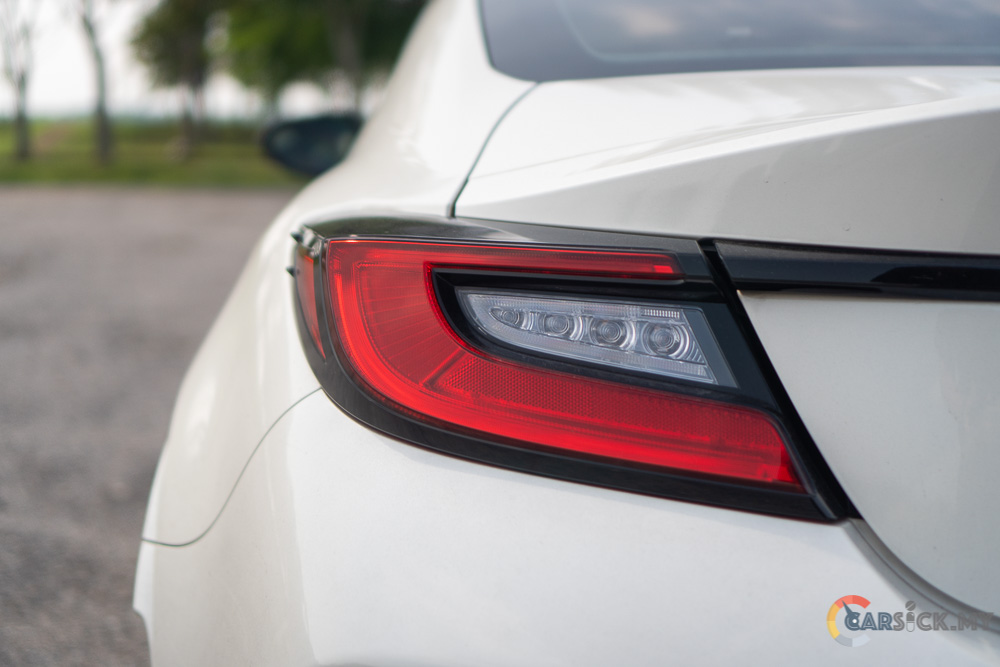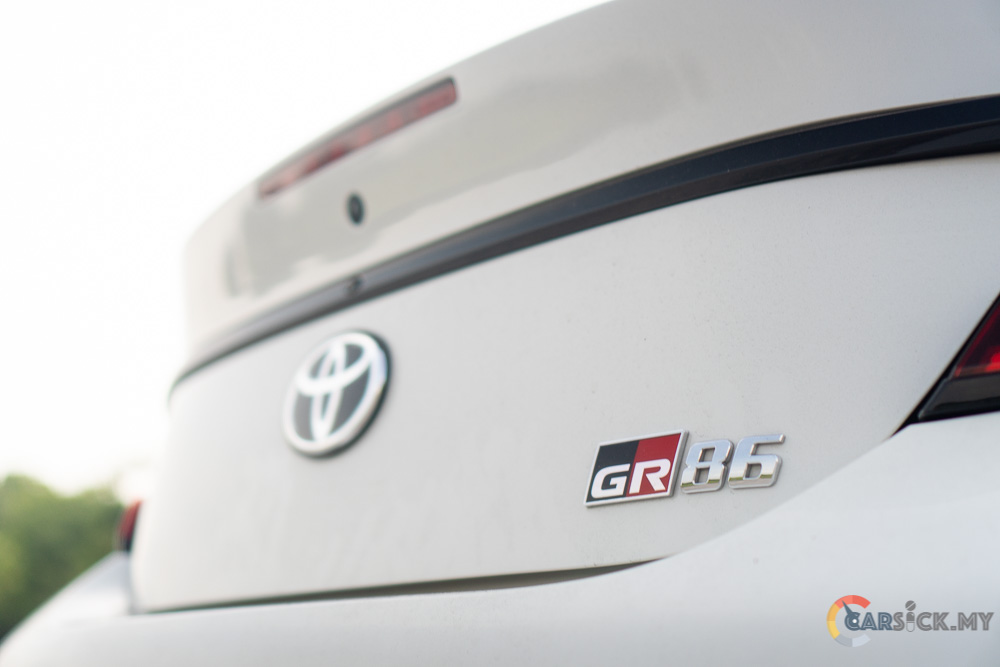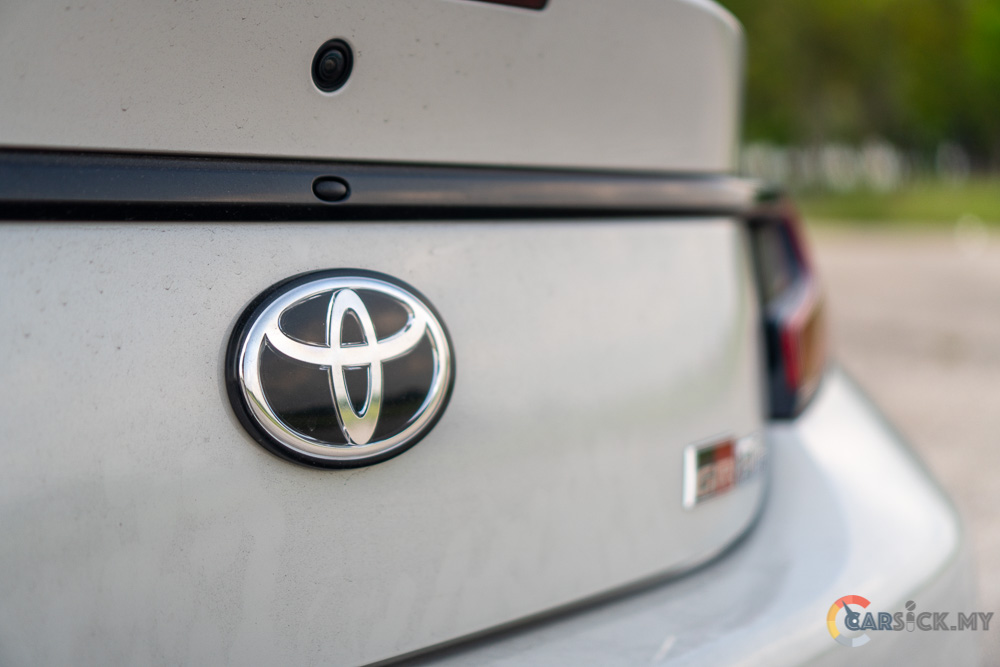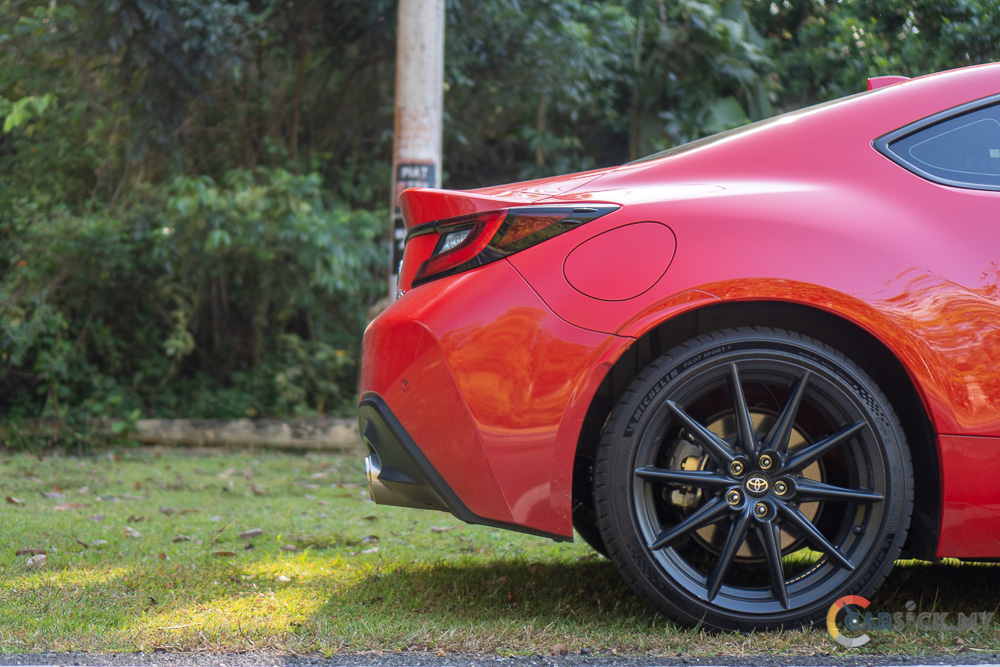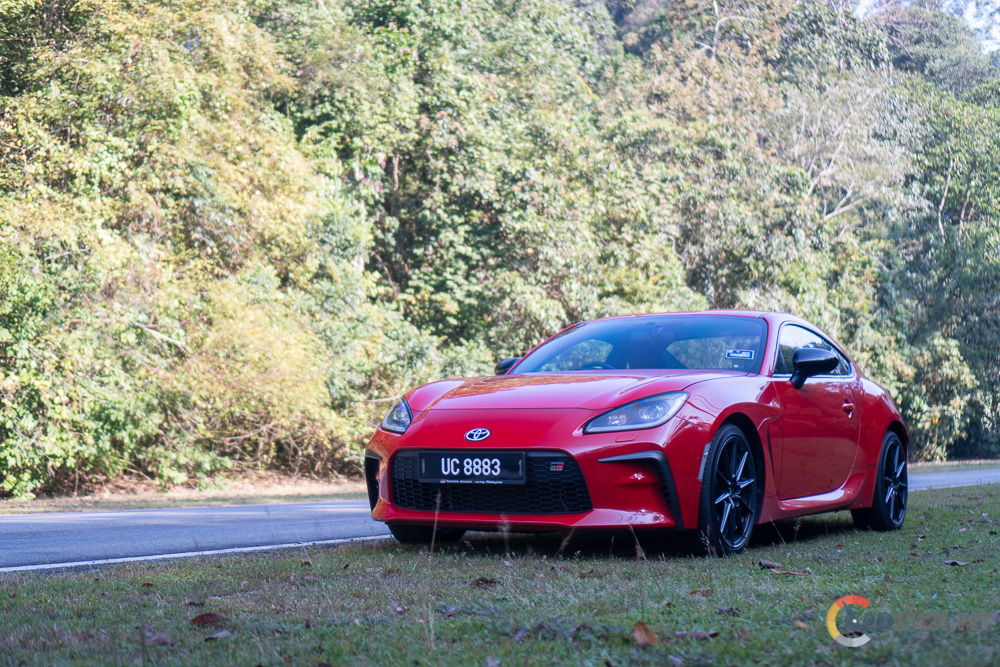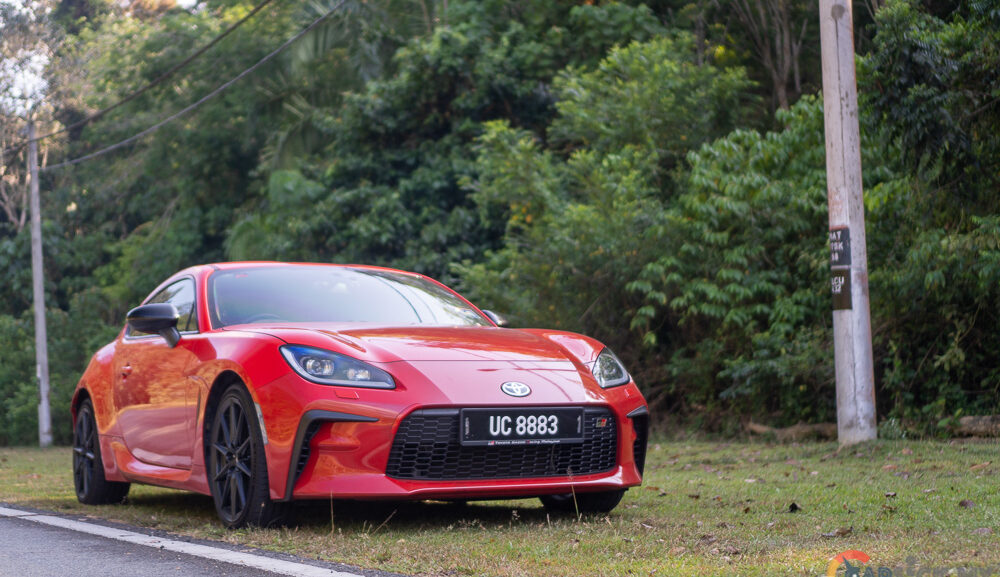In the automotive market, budget sports cars are technically a dying breed. With most people only interested in SUVs, automotive manufacturers spend less and less time building sports cars, let alone budget sports cars. But thanks to the Japanese brands, they have stuck to their roots and continue to produce small budget sports cars for the masses, especially Toyota. One of the highly praised models is the Toyota GR 86, which replaces the very successful GT86. Not too long ago, I got to review both the manual and automatic variants of this model. This time around, I will bring you a combined review of both models and see if a manual is still fun in 2024.
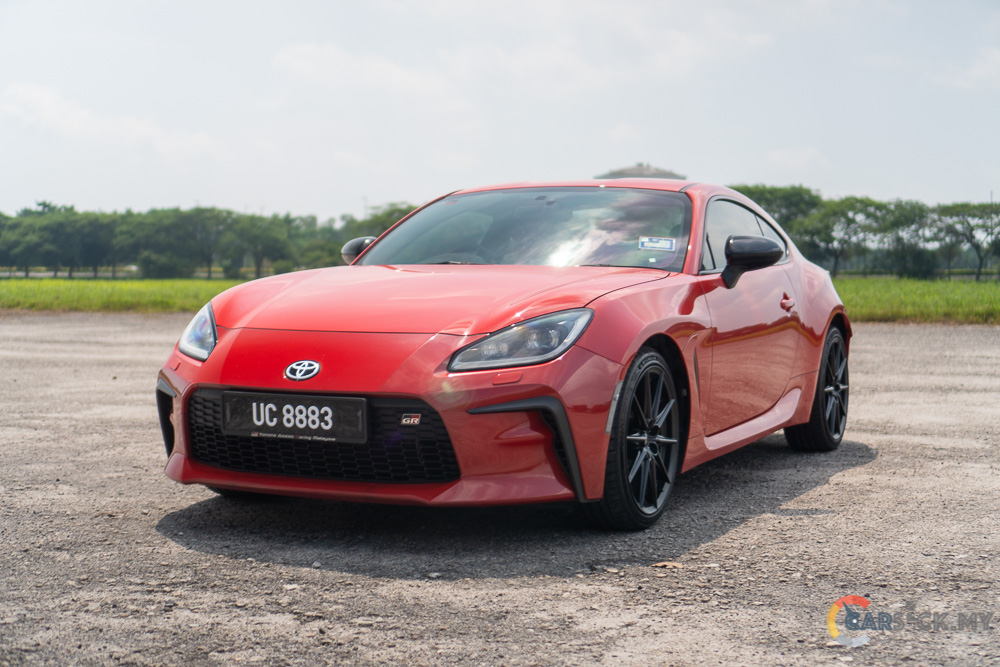
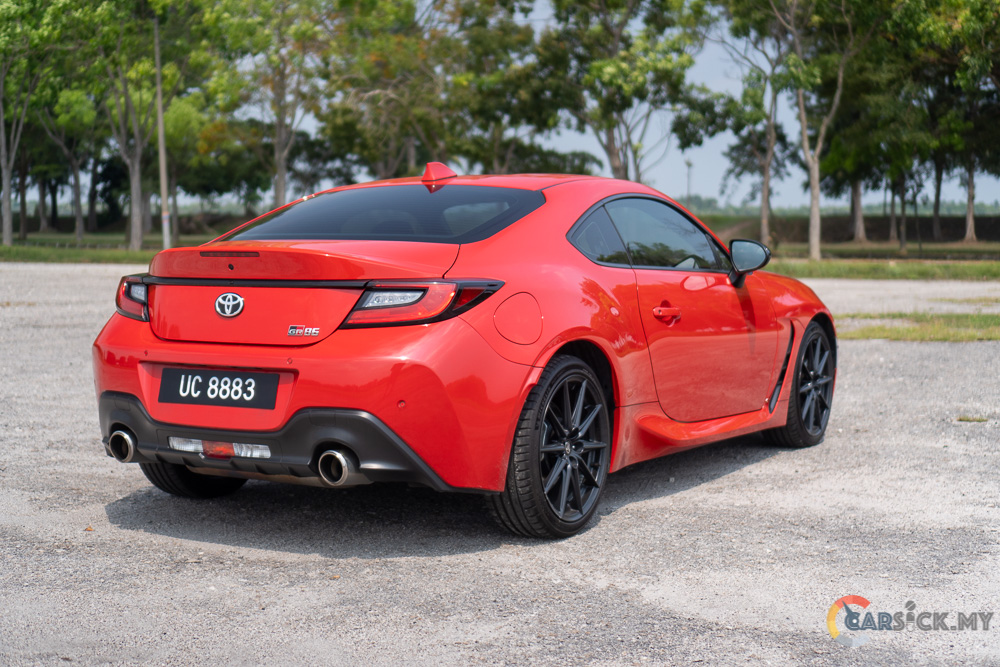

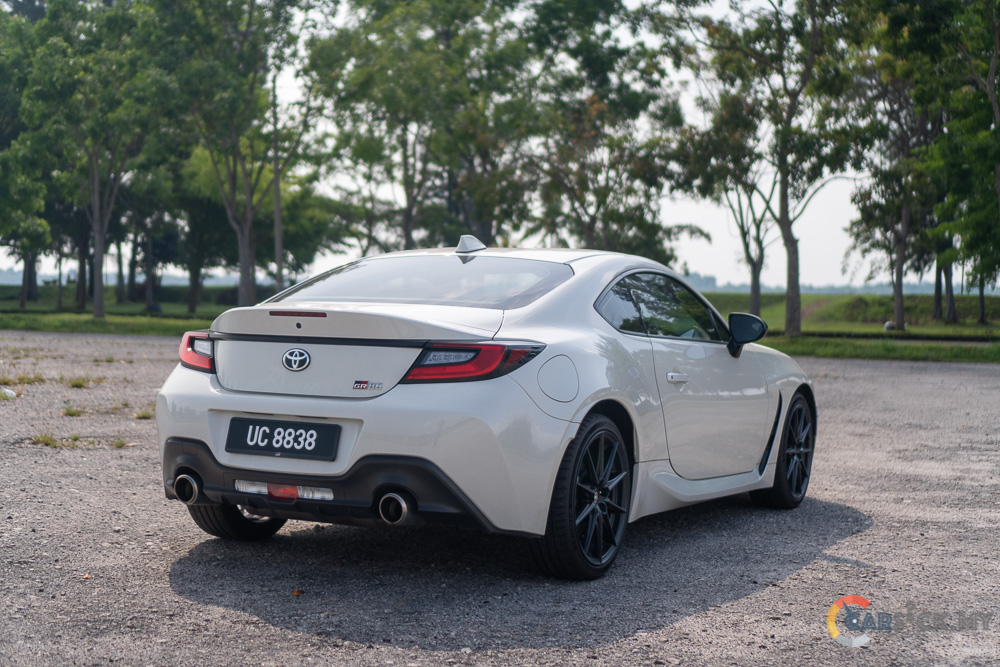 The GR 86 comes in a compact size, technically smaller than your regular Toyota Vios or Honda City. The car also sits very low to the ground, exuding a sporty vibe. The red car here is the automatic variant, while the white one is the manual version. Between these two, the red color is definitely the more eye-catching one, fitting the profile of a sports car. Based on the exterior alone, both cars share similar features, with barely any differences between the models. The only notable difference is the missing cameras for the ADAS systems, which the manual version does not have.
The GR 86 comes in a compact size, technically smaller than your regular Toyota Vios or Honda City. The car also sits very low to the ground, exuding a sporty vibe. The red car here is the automatic variant, while the white one is the manual version. Between these two, the red color is definitely the more eye-catching one, fitting the profile of a sports car. Based on the exterior alone, both cars share similar features, with barely any differences between the models. The only notable difference is the missing cameras for the ADAS systems, which the manual version does not have. 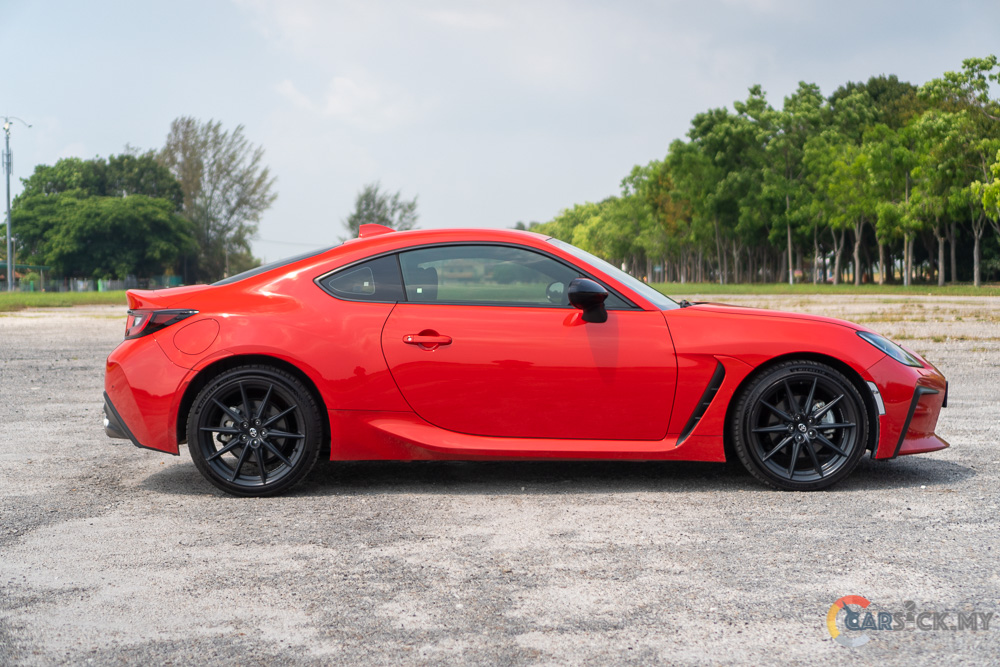
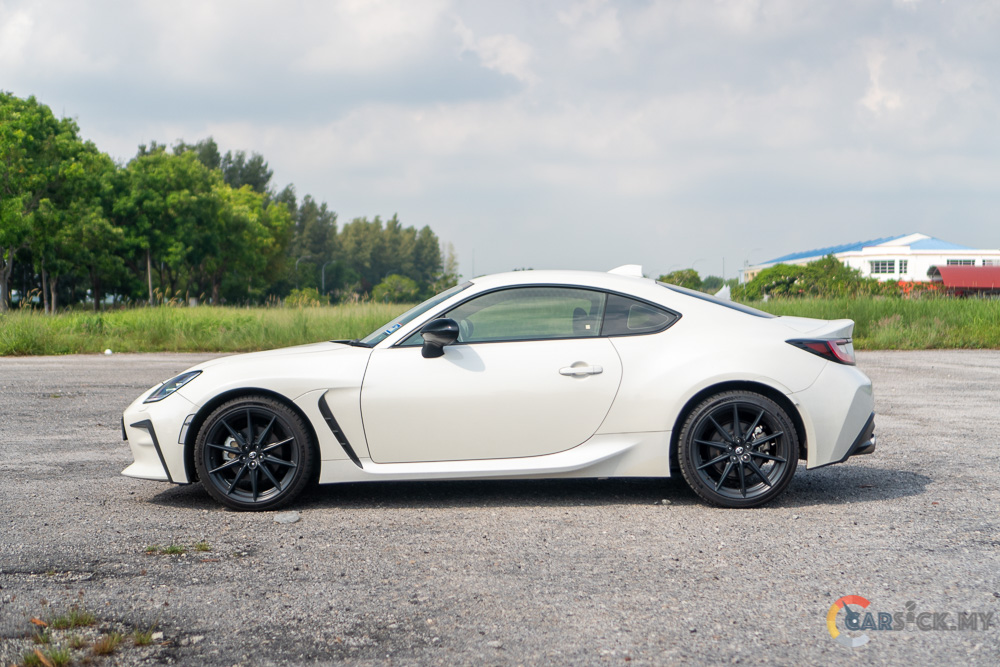
Starting from the front, the GR 86 comes with a flat and sharp nose. This is complemented by the full LED headlights that sit flush at the front, creating an aerodynamic look that likely reduces drag. While the front indicators are integrated into the headlights, I did find the side repeaters are located differently than usual.
On most vehicles, the side repeaters are usually located on either the wing mirrors or the fender side closer to the doors. But for the GR 86, Toyota has fitted the side repeaters beside the front bumper. At times, when I lock the car, I struggle to know if the car is locked or not, as the side repeaters are not where they usually sit. I don’t think this is a significant issue, but it definitely takes some time to get used to. Behind the front wheel arches, there is an air vent to help release pent-up air within the wheel arch. 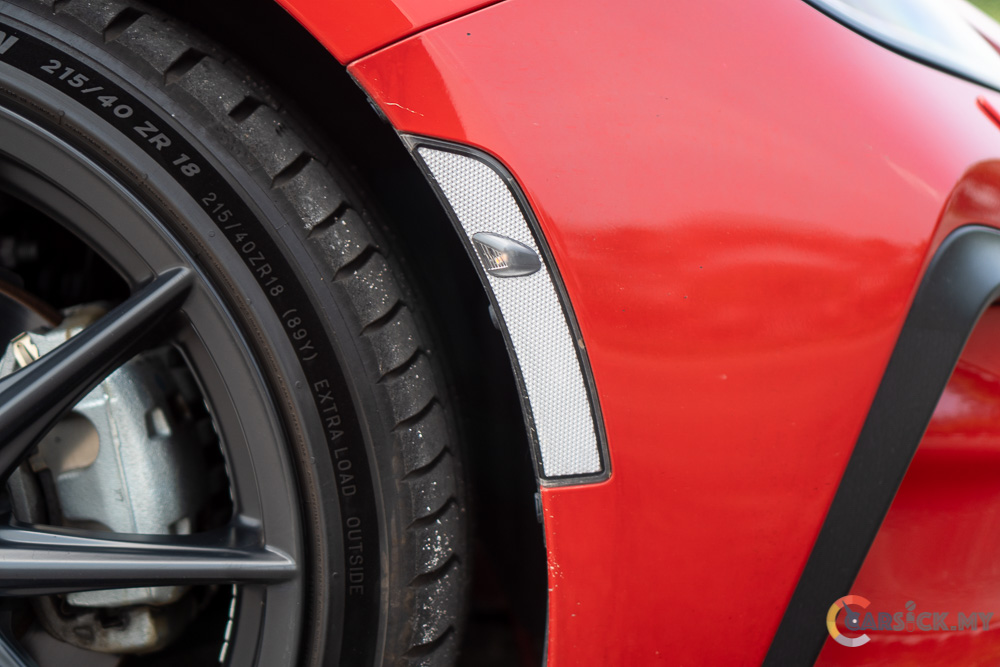
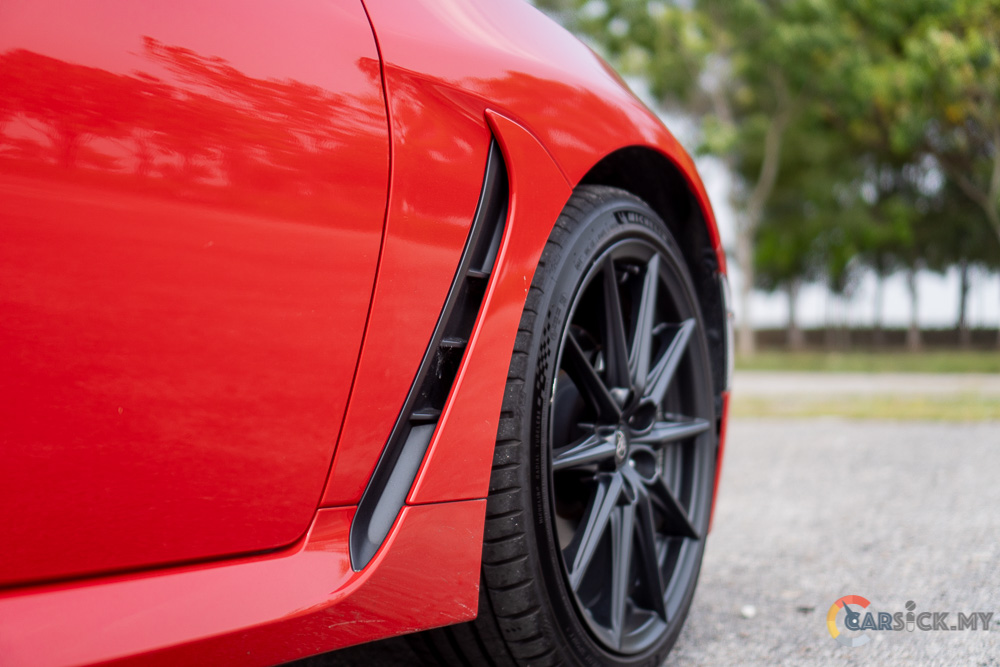
At the back, the GR 86 has a more conventional rear. It looks sporty, featuring two large tailpipes at the bottom of the vehicle. Even though the exhaust looks huge, it feels a little too quiet for a sports car. The GR 86 also comes with full LED taillights that blend in well with its overall look. While the 226L boot space is on the smaller side even for a car of this size, I think if it were a liftback, it would probably allow owners to access the boot more easily. To be fair, the spare tire protruding into the boot doesn’t really help with the boot space. At least the rear seats can be folded down to expand the boot. And to top it all off, the GR 86 comes with a set of 18-inch rims painted black. These rims are the same design as the GR Yaris, and I really like the look of them. They are wrapped in 215/40 R18 Michelin Pilot Sport 4 tires. 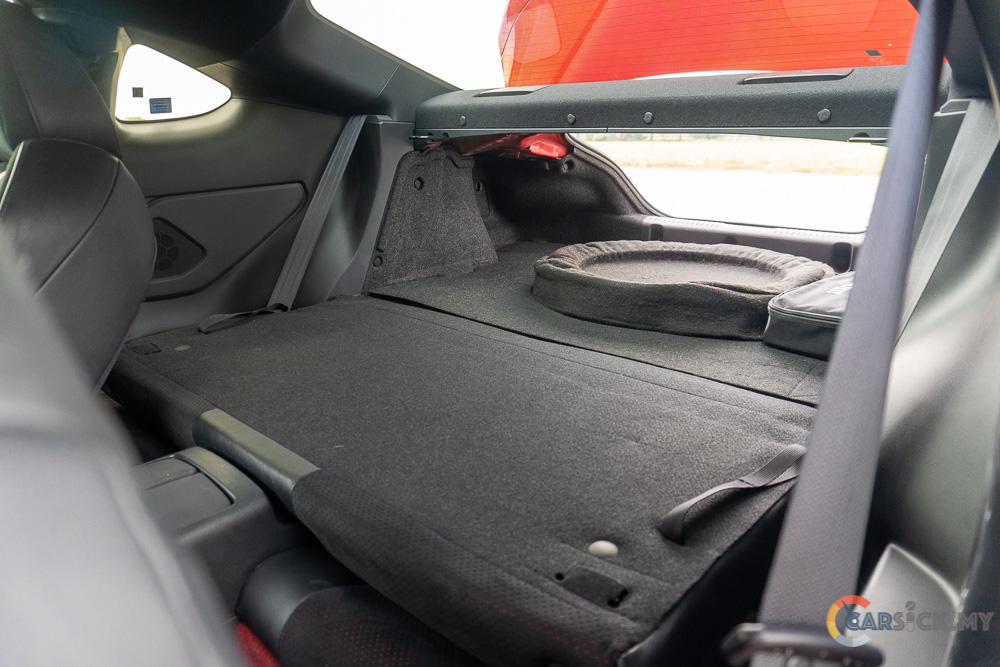
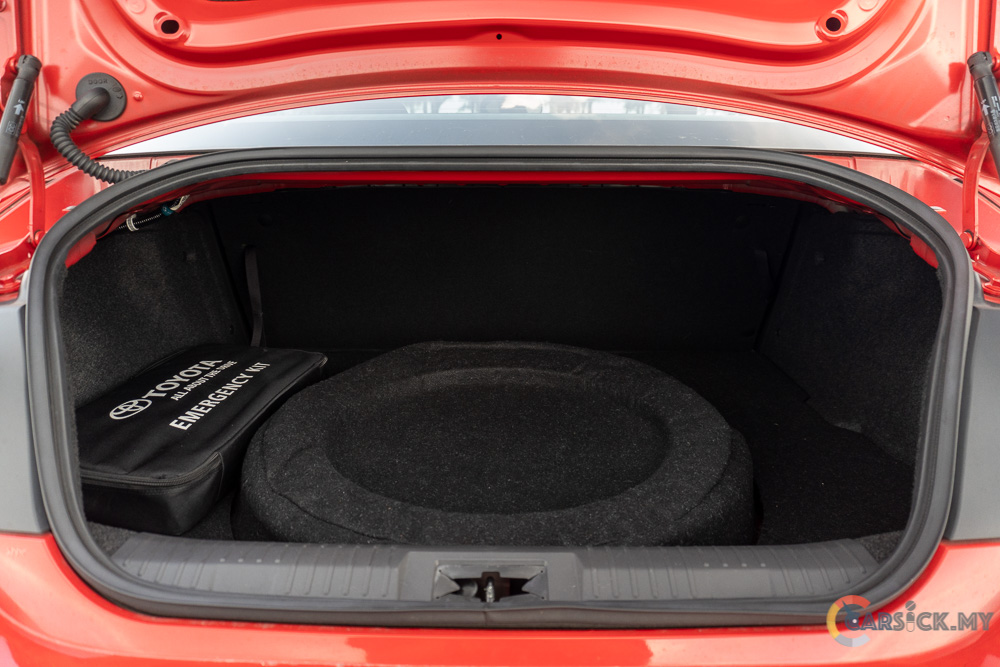
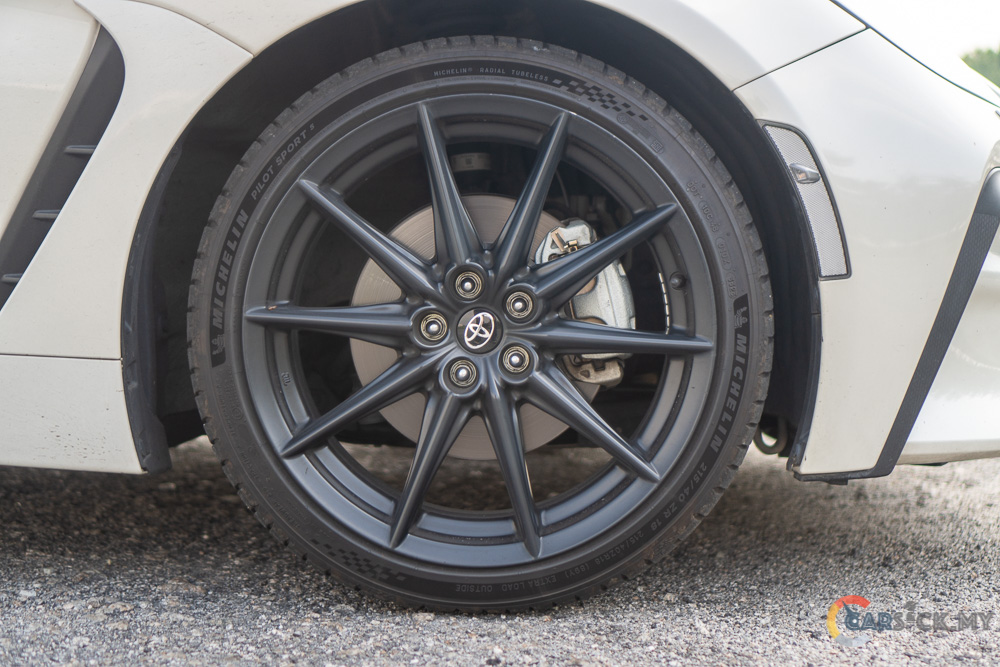
Just like the GT 86, don’t expect the GR 86 to come with a premium interior. This is meant to be a budget sports car, after all. Then again, the interior feels solid, and the fit and finish are top-notch. Instead of just using one type of material inside the vehicle, Toyota has used different materials to give it a more premium feel. One of these materials is the suede-like fabric fitted on the dashboard, door cards, and seats. On top of that, the interior features red color highlights to bring some color to the predominantly black interior.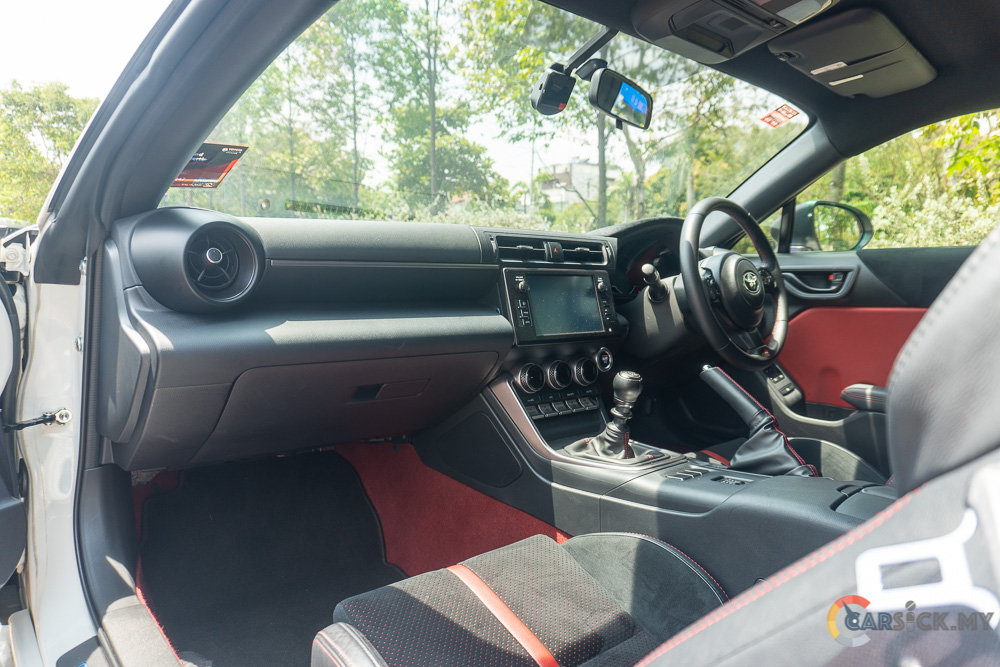
In front of the driver is a 7-inch digital instrument cluster that is clear and easy to read. The instrument cluster has two gauge designs: one with a circular tachometer and the other appearing when the car is in track mode. Beside the instrument cluster, you’ll find an 8-inch infotainment screen. This system features wired Android Auto and Apple CarPlay. While there is a reverse camera within the infotainment system, the picture quality is not the best. And for the manual version, you don’t even get reverse sensors. 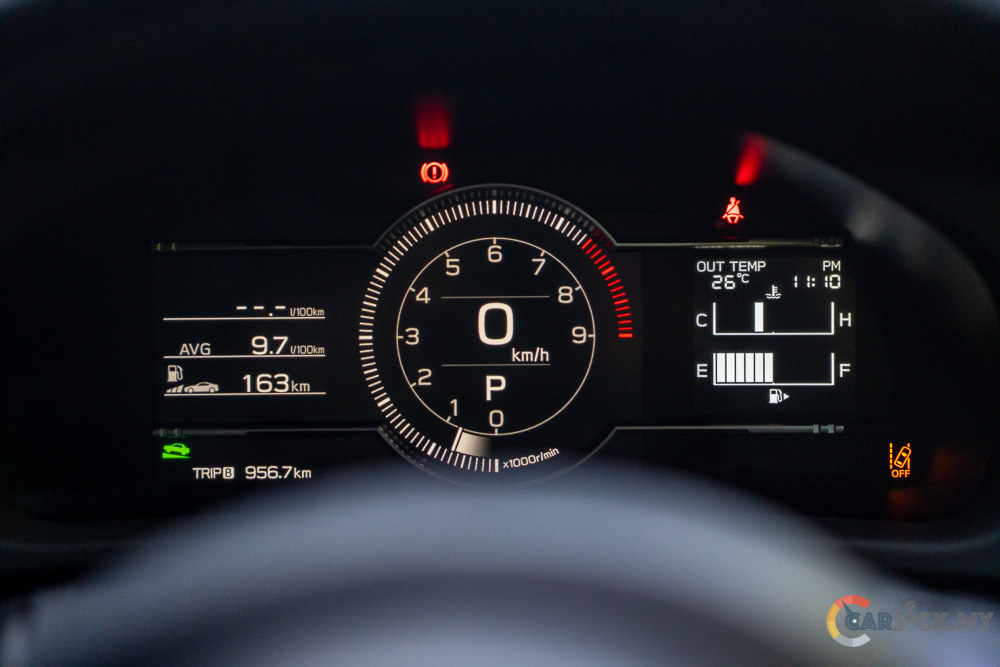
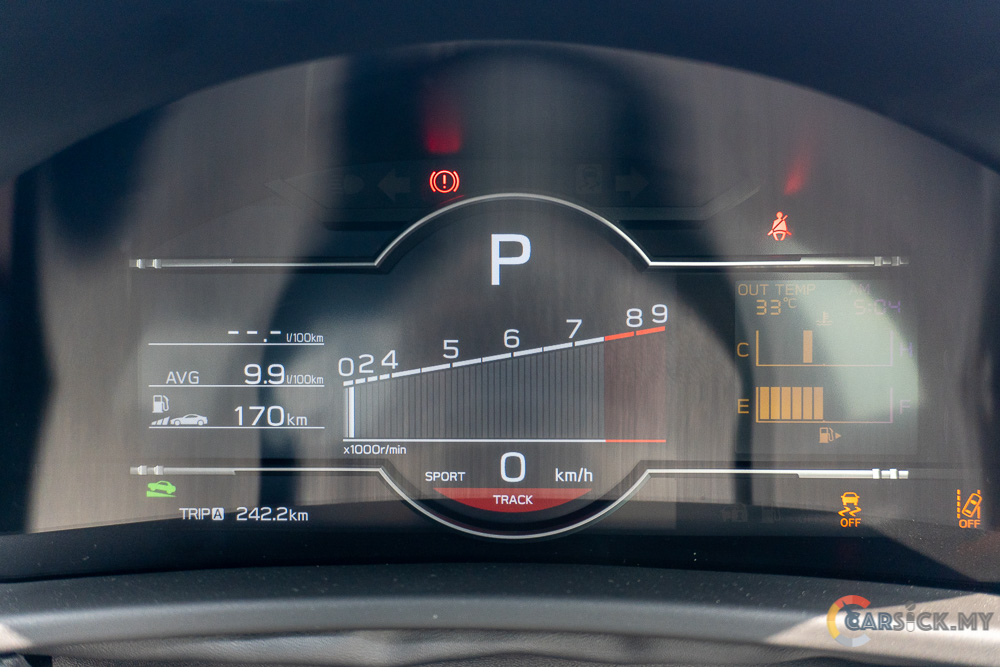
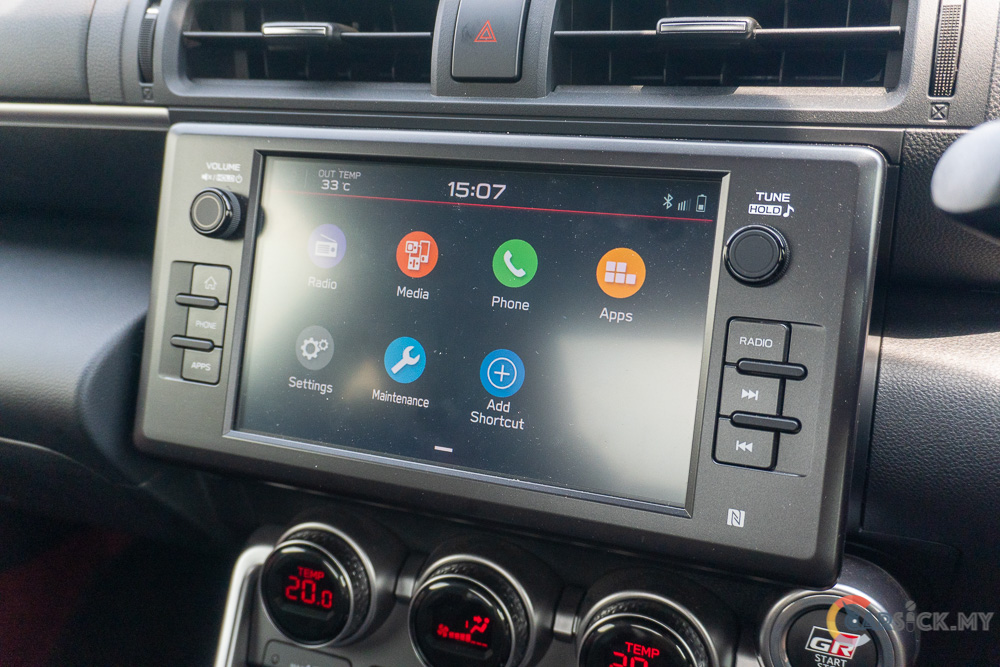
At the center console, there are three buttons to change the drive mode and toggle the traction control on and off. The drive modes include Sport mode, Snow mode, and Track mode, but these are only available on the automatic variant. The manual variant doesn’t have Sport or Snow mode. While the VSC on/off is straightforward, the Track mode is where the car really wakes up. In Track mode, the instrument cluster changes graphics, and the VSC is constantly off, meaning you are fully in control of the vehicle. This is similar in both the automatic and manual versions of the GR 86. Below the drive mode buttons are the controls for the heated seats, which are pretty redundant in Malaysia. 
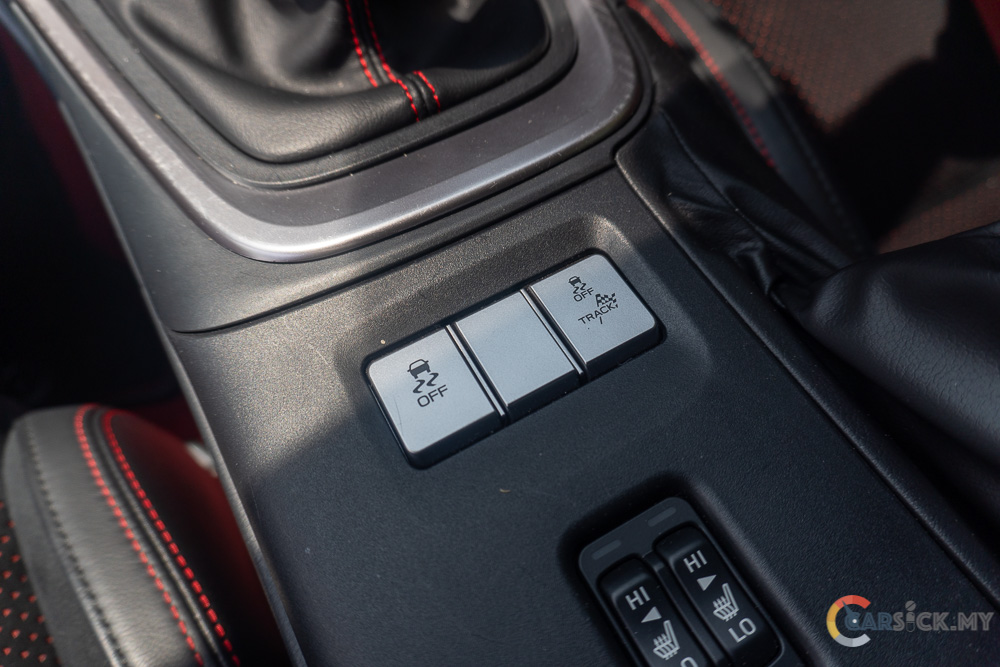
Sitting in the driver’s seat, you will feel very cocooned as the GR 86 comes with body-hugging seats. The seats are surprisingly comfortable and give the driver a sense of snugness. The seat will keep you properly in place, even during spirited driving. The ergonomics for the driver are spot on, as buttons and switches are easily reachable. I like the seating position of the GR 86, as you sit quite low. However, being a low vehicle with sports seats, getting in and out can be quite troublesome for some. 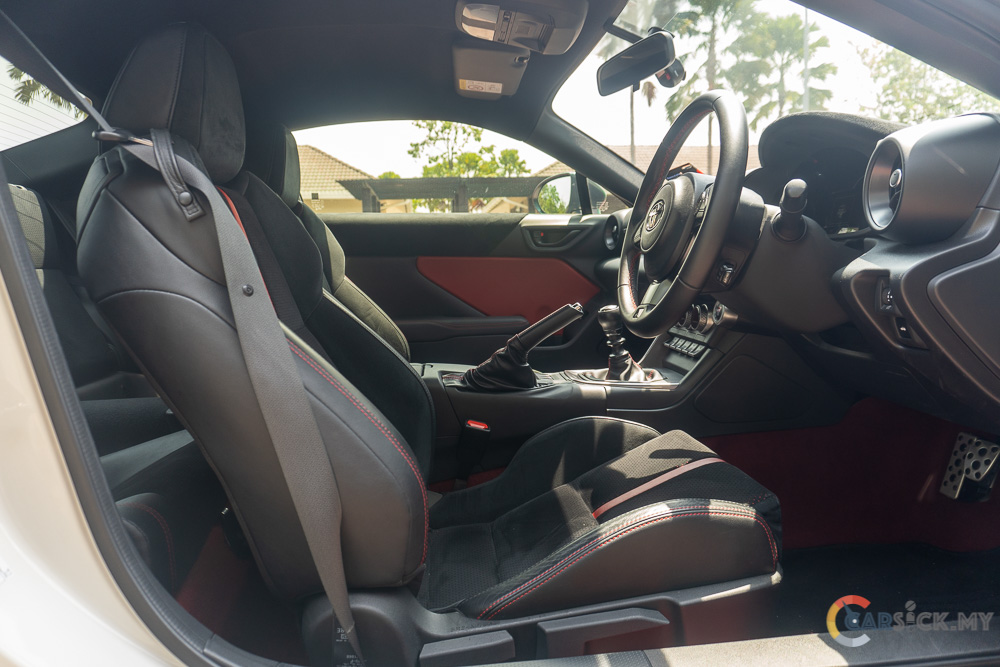

Moving to the back, the GR 86 still provides two additional seats behind the front seats. But to be fair, these rear seats are really small, and most adults wouldn’t want to sit back there. However, you do get two ISOFIX anchor points in the rear, so if you want to bring your kids around in the GR 86, it’s actually possible. In terms of NVH (Noise, Vibration, and Harshness), the GR 86 is not a very quiet place to be. Road noise is very obvious, giving the illusion that you’re driving fast, even if you aren’t. This applies to both the automatic and manual variants. 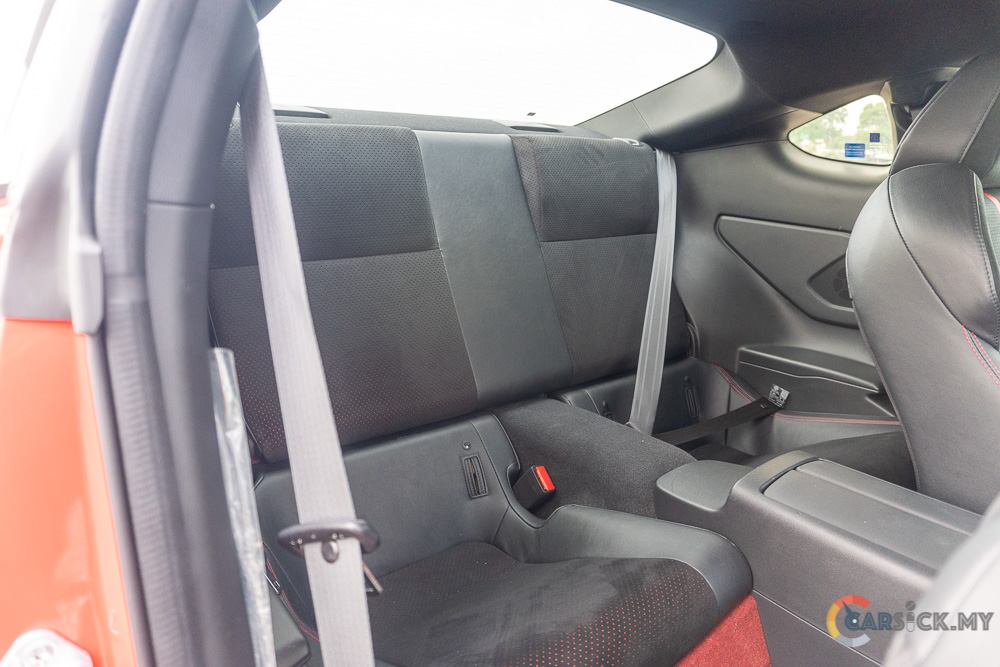
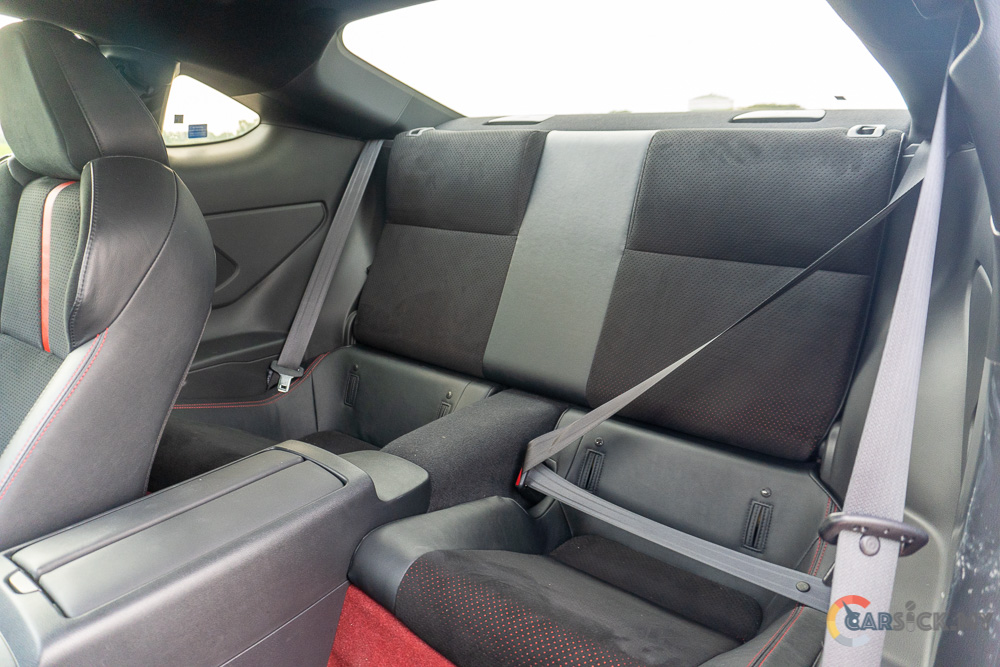
Powering the GR 86 is a 2.4L naturally aspirated flat-4 engine. There are two transmission options available: automatic or manual. The power from this engine is sent to the rear wheels, making the GR 86 a rear-wheel-drive vehicle. The 2.4L engine has the ability to produce 234 hp and 250 Nm of torque. With the manual transmission, the GR 86 can accelerate from 0-100 km/h in 6.3 seconds and achieve a top speed of 226 km/h. For the automatic variant, the car can do the century sprint in 6.8 seconds and reach a lower top speed of 216 km/h. 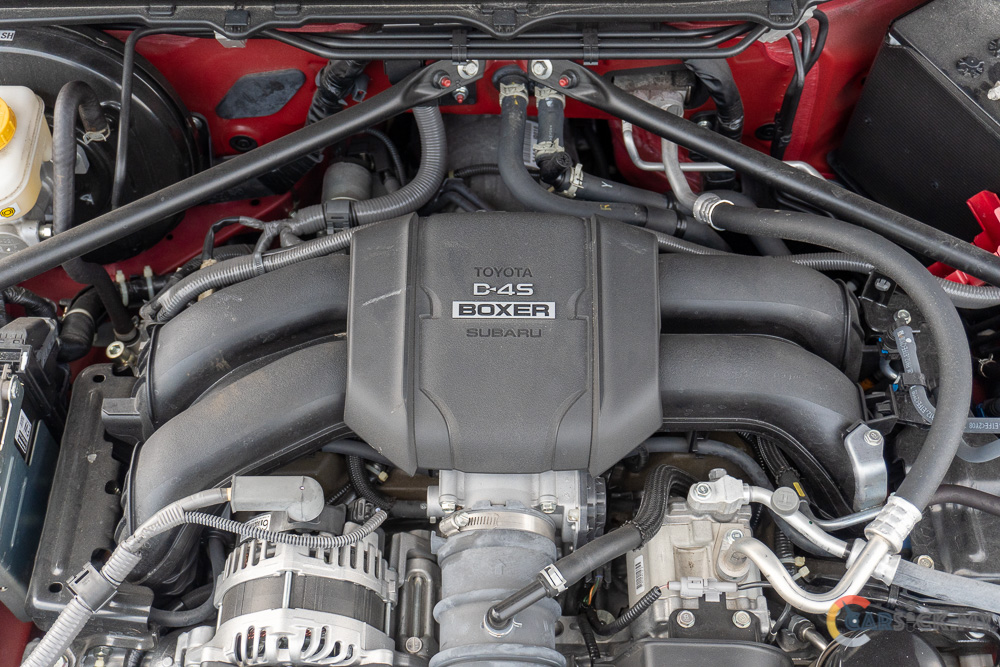
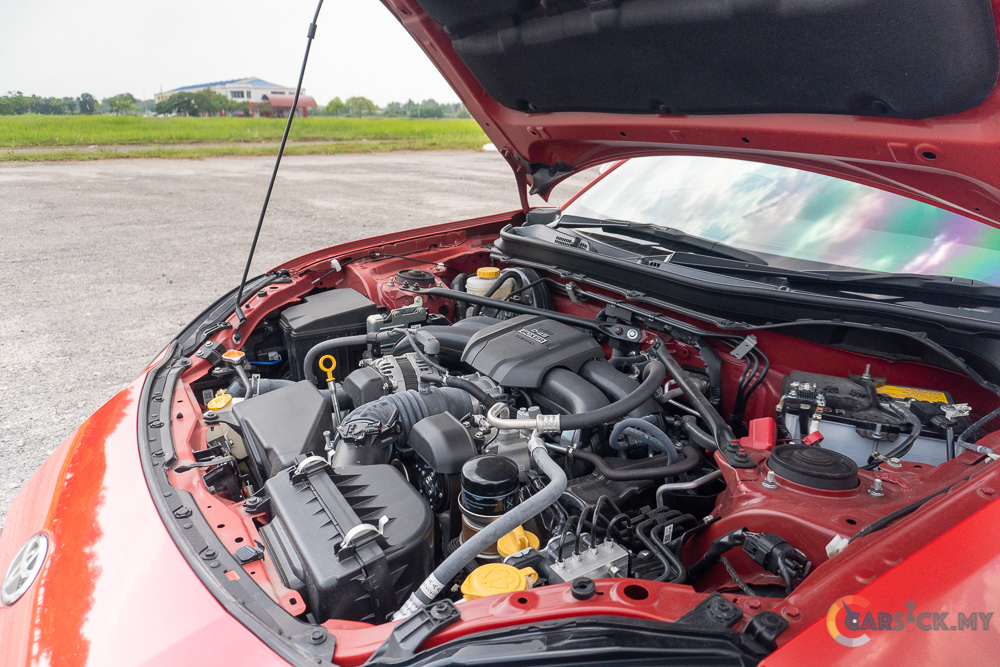
Being a 2.4L naturally aspirated engine, don’t expect it to provide the burst of acceleration you usually get with a turbocharged engine. Then again, I can still feel the car’s strong acceleration; it just does it in a more linear pattern. As the revs climb, the GR 86 reaches triple-digit speeds more quickly. Without a turbo, the GR 86 behaves well even at lower speeds. On normal roads, this engine is powerful enough to keep up with traffic. But the full potential of this engine lies higher up in the rev range, and on the road, I don’t think anyone wants to drive at such high revs daily. But on the track, it’s probably a different story. 

Surprisingly, the GR 86 is quite fuel-efficient, thanks to its large engine and light body. This translates to an average fuel economy figure of 9.8L/100km, similar for the manual version. If you love to have more control over the vehicle, you can always choose the manual version. The manual transmission transmits the engine’s power to the wheels more directly, making it feel more rapid during in-gear acceleration. The clutch is easy enough to find the biting point, making the manual version quite easy to drive. In the manual version, I believe owners will have more opportunity to explore higher up the rev range. 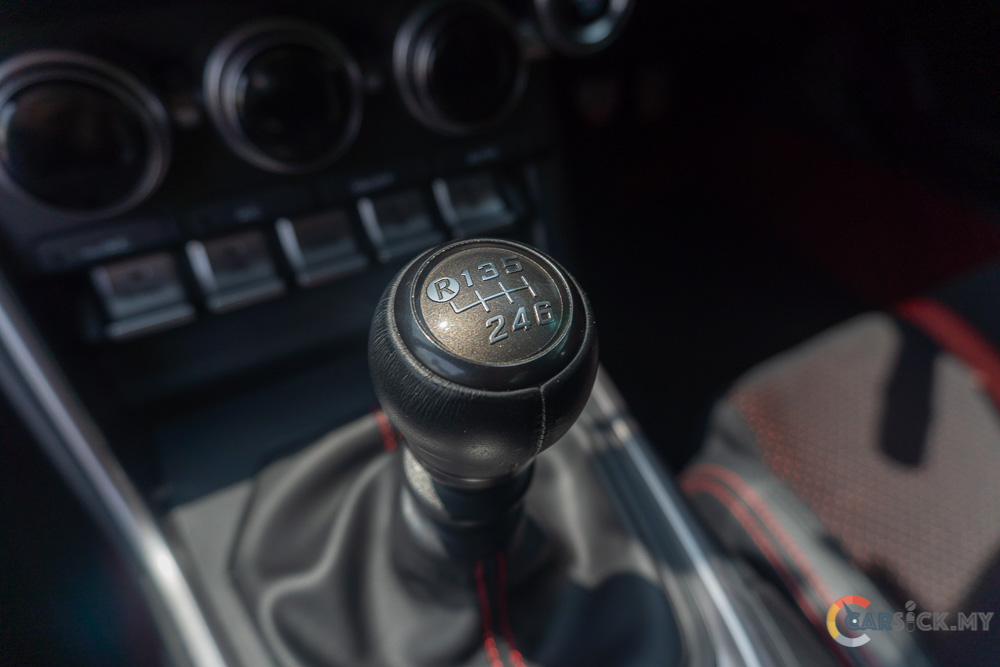
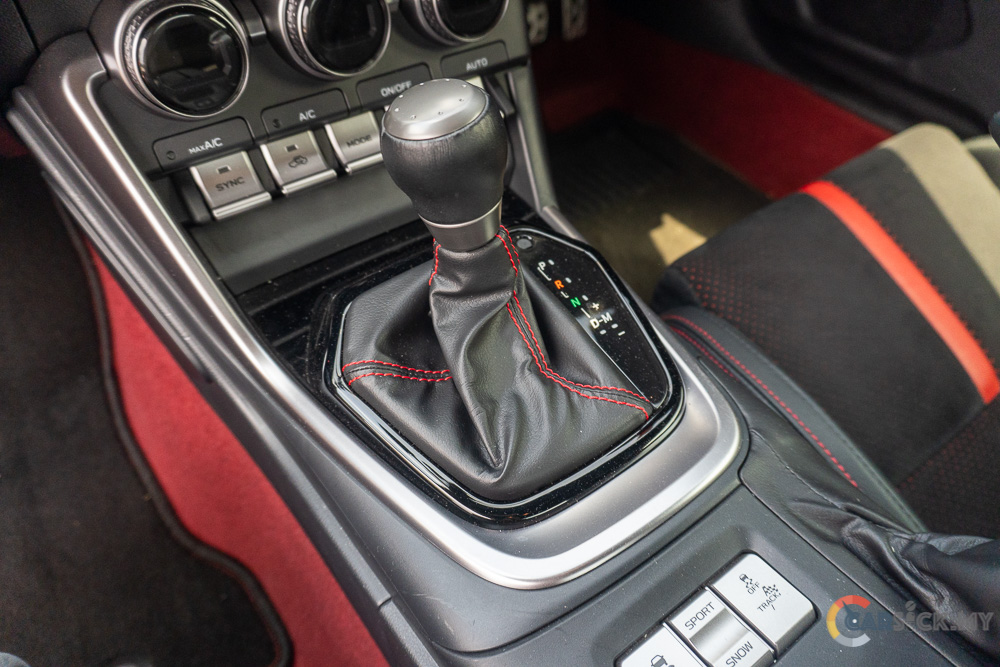
The ride and handling of the GR 86 are what make this vehicle enjoyable to drive. The car is very well balanced, allowing the driver to feel the vehicle’s body movements. This communication between the vehicle and driver means that every input directly impacts the vehicle’s movement, allowing the driver to feel the level of grip. The steering is pinpoint sharp, providing plenty of feedback from the road. The GR 86 is so well balanced that at speeds where front-wheel-drive vehicles start understeering, the GR 86 continues to follow the driver’s intentions. The steering also reacts eagerly to direction changes, making the GR 86 agile. Lastly, the steering wheel is well-weighted, giving the driver plenty of confidence.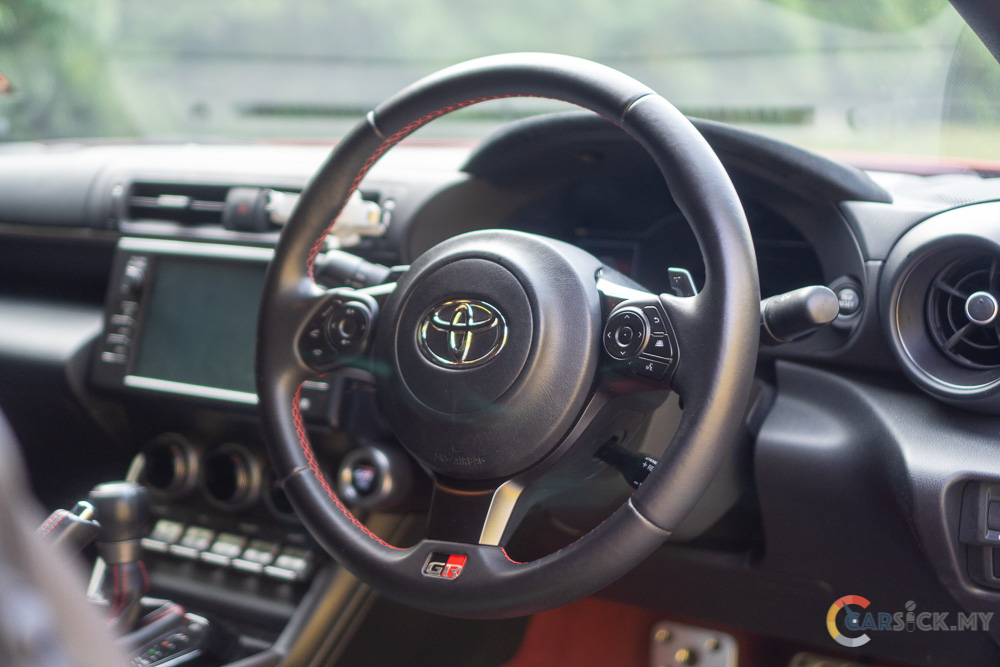
In terms of ride comfort, Toyota strikes a good balance, creating a sporty car that rides reasonably comfortably. The GR 86 feels a tad firm over uneven roads, but the suspension handles it with sophistication. While this suspension does a good job minimizing body roll in corners, Toyota has engineered some roll to make the vehicle feel more playful. This body movement is beneficial for those learning car control, helping them understand the vehicle’s dynamics. The GR 86 is already a fun car to drive, but there is plenty of room for modifications if you wish to turn it into a more hardcore machine.
Braking-wise, the GR 86 has a firm pedal feel that inspires confidence. The brakes are sufficient for the vehicle, handling most of the punishment you put them through. Toyota didn’t need to equip the GR 86 with expensive performance brakes to achieve excellent results, proving that lighter cars are more fun and economical to run.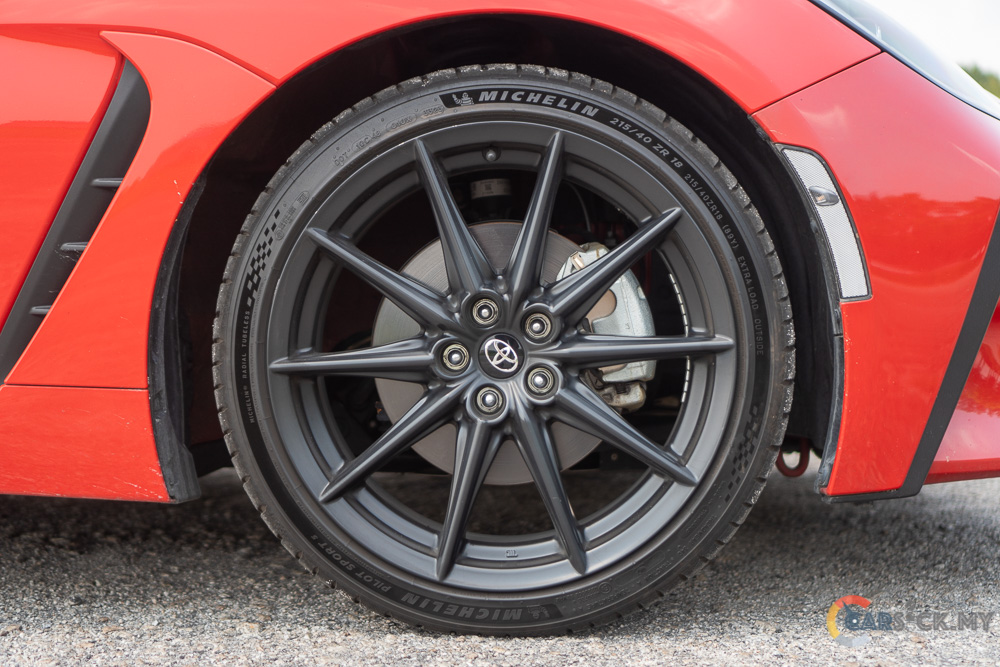
In the driver assistance department, the manual and automatic versions differ significantly. The manual version lacks driver assistance features, while the automatic variant comes with a full suite of these systems. While it’s nice to have these systems, I personally enjoy vehicles without them more. The GR 86 comes standard with 7 airbags, Emergency Stop Signal (ESS), Anti-Lock Braking System (ABS), Brake Assist (BA), Vehicle Stability Control System (VSC), Traction Control System (TCS), Electronic Brake-force Distribution (EBD), Hill Start Assist (HAC), Blind Spot Monitor (BSM), Rear Cross Traffic Alert (RCTA), and Adaptive Front Lighting System (AFS). If you get the automatic variant, it adds Pre-Crash System (PCS), Lane Departure Alert (LDA), Adaptive Cruise Control (ACC), and Automatic High Beam (AHB).
The GR 86 is indeed a very fun car to drive, and if you don’t use it daily, it can feel special as well. But Toyota has made it possible for owners to use it daily if they want to. If you’ve already set your heart on buying a GR 86, the only decision is which transmission to go for. You can either pay RM 295,000 for the manual version or RM 305,000 for the automatic version. Apart from the different transmissions, the extra RM 10,000 gets you a full suite of driver assistance systems. For me, if I ever get a GR 86, I will definitely keep it for the weekends so the car will feel special every time I get behind the wheel. And I would choose the manual version over the automatic to make the car feel even more special.
Check out the full photo album here. 
